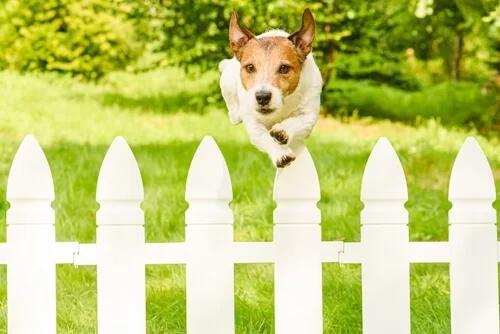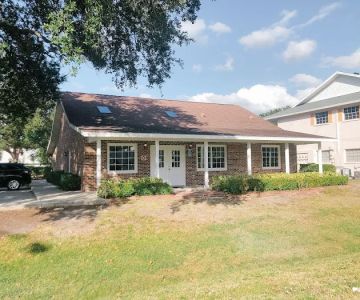- Planning-Your-Backyard-Dog-Fence
- Choosing-the-Right-Type-of-Dog-Fence
- Step-by-Step-Construction-Process
- Tips-for-Maintenance-and-Safety
- Real-Life-Examples-from-Dog-Owners
- Where-to-Find-Professional-Help-and-Resources
1. Planning Your Backyard Dog Fence
Before you start building a backyard dog fence, thorough planning is essential to ensure the fence meets your dog’s needs and the layout of your yard. Consider your dog’s size, breed, and behavior, as well as the dimensions and terrain of your backyard.
1.1 Assessing Your Dog’s Needs
Large or highly active dogs require taller, sturdier fences to prevent escapes, while smaller or less agile dogs may do well with lower fencing. Additionally, if your dog is a jumper or digger, the fence design must address those behaviors.
1.2 Measuring and Mapping Your Yard
Accurate measurement of your yard’s perimeter is critical. Draw a scaled map to visualize where the fence will go, considering gates, corners, and potential obstacles. This planning step will save time and prevent costly errors later.
2. Choosing the Right Type of Dog Fence
There are several backyard dog fence ideas to explore, each with unique advantages and challenges. Selecting the right type depends on your budget, your dog’s habits, and aesthetic preferences.
2.1 Traditional Wooden or Chain-Link Fences
These are durable and provide a clear physical barrier. Wooden fences offer privacy and can be customized, while chain-link fences are cost-effective and require less maintenance.
2.2 Invisible or Electric Dog Fences
Invisible fences use buried wires and collars to keep dogs within boundaries without a visible structure. These are suitable for dogs trained to respond to signals but require careful introduction and training.
2.3 DIY Dog Fence Options
For those who enjoy hands-on projects, building a fence from scratch can be rewarding. Using materials like metal panels or mesh wire combined with sturdy posts can create a secure and safe environment tailored specifically for your dog.
3. Step-by-Step Construction Process
Building your backyard dog fence involves several detailed stages to ensure it is both functional and durable.
3.1 Gathering Materials and Tools
Depending on your fence type, you’ll need materials like fence panels, posts, concrete mix, nails or screws, a post hole digger, and measuring tape. Quality materials increase longevity and safety.
3.2 Installing Fence Posts
Start by marking the post locations based on your yard map. Dig holes deep enough (usually about two feet) to secure posts firmly, using concrete to anchor them in place. Proper spacing is critical to prevent sagging.
3.3 Attaching Fence Panels or Wire
Secure the panels or wire mesh to the posts with nails, screws, or clips. Ensure the bottom of the fence is flush with the ground or buried slightly to prevent digging underneath.
3.4 Adding Gates and Finishing Touches
Install gates in convenient locations, making sure they close securely. Inspect the entire fence for gaps, loose fittings, or sharp edges that might harm your dog.
4. Tips for Maintenance and Safety
Once your backyard dog fence is built, ongoing care is vital to keep it safe and effective.
4.1 Regular Inspections
Check for any damage, loose posts, or wear and tear at least every few months. Prompt repairs prevent your dog from escaping or getting injured.
4.2 Landscaping Considerations
Keep vegetation trimmed around the fence to reduce damage risks and prevent hiding spots for pests. Avoid planting thorny bushes near the fence line.
4.3 Training Your Dog
Fencing alone isn’t enough—training your dog to respect boundaries enhances safety. Positive reinforcement methods work best for teaching dogs to stay within the yard.
5. Real-Life Examples from Dog Owners
Jessica, a dog owner from Ohio, shared her experience building a backyard dog fence to contain her energetic border collie. After researching different backyard dog fence ideas, she chose a six-foot wooden fence with buried mesh to prevent digging. Her thoughtful planning and quality materials have kept her dog safe and happy for over three years.
Another story comes from Mark, who opted for a DIY metal mesh fence after his Labrador developed escape tendencies. The fence was cost-effective and sturdy, and with professional advice from Hidden Brook Veterinary on safety features, Mark successfully created a secure space that his dog respects.
6. Where to Find Professional Help and Resources
Building a backyard dog fence can be straightforward, but expert guidance ensures the best results. Hidden Brook Veterinary provides advice on the safest fencing options based on your dog’s behavior and needs. Their team can recommend products, installation services, and additional pet safety solutions tailored to your situation.
By combining professional knowledge with your personal touch, you can create a secure and comfortable backyard haven that your dog will love.











